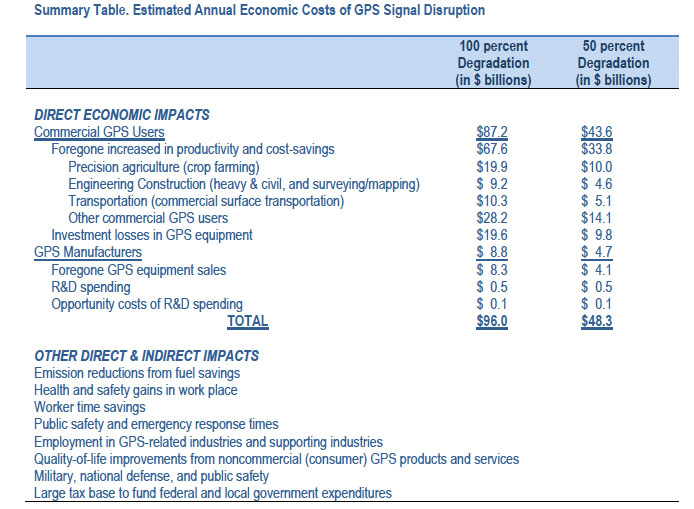Government watchdogs said in a new report that schedule slippages in the new GPS ground system — which in October had another four months added to its repeatedly extended schedule — are more of a factor in delays to GPS modernization than technical problems with the satellite’s payload.
Government watchdogs said in a new report that schedule slippages in the new GPS ground system — which in October had another four months added to its repeatedly extended schedule — are more of a factor in delays to GPS modernization than technical problems with the satellite’s payload.
The payload issue pushed back the GPS III satellite program by two years, the Government Accountability Office (GAO) wrote. But the satellite program’s dependence on the Global Positioning System Next Generation Operational Control System (GPS OCX) "proved to be a greater challenge to sustaining and modernizing the GPS system," the GAO wrote in its November 2016 report Weapons Systems Requirements: Details Systems Engineering Prior to Product Development Positions Programs for Success.
Linked Programs
Block 1 of the OCX system is required for the operation of both old and new GPS III satellites as well as new constellation capabilities. However, Block 1 won’t be delivered, however, until near the end of 2021 — during the first quarter of fiscal year 2022 (FY22). Federal fiscal years begin on October 1 of the preceding calendar year.
OCX had already been delayed by six years to July 2021 when Under Secretary of Defense for Acquisition, Technology and Logistics Frank Kendall gave OCX prime contactor Raytheon another four months to finish its work. The new delay came on top of a 24-month reprieve he granted in December 2015 and other schedule changes before that.
"Incorporation of the additional 4 months into Raytheon’s schedule would result in the restructured OCX program achieving Block 1 RTO (Ready To Operate) in 1Q FY2022," Air Force spokesman Capt. Annamarie Annicelli told Inside GNSS.
Kendall is monitoring the program closely, holding quarterly reviews with the Air Force and Raytheon. Though the Pentagon certified to Congress that it needed OCX after a critical Nunn-McCurdy breach was declared this summer, Kendall has made clear he is ready to cancel all or some of Raytheon’s contract if it again strays off course.
But additional slippages may be on the horizon.
OCX "may be delayed further because of ongoing developmental issues," according to the November GAO report. The Air Force originally told Kendall a year ago, during a Deep Dive review in December that they needed until June 2023.
The cost for the OCX program also has soared from the original $1.5 billion (including all contract options) to some $5.5 billion — hence the triggering of Nunn-McCurdy provisions, which could have forced the program’s termination. The Nunn-McCurdy law aims to alert Congress when a program is seriously over budget and force that program’s realignment.
Interestingly, the cost of the GPS III program has jumped from $2.5 billion to more than $3.0 billion, according the report. That puts the GPS III program close to the 25 percent cost-increase threshold that triggers a non-critical Nunn-McCurdy breach, and the requirement that Congress be notified.
Lessons Learned
The findings in the GAO report are part of a larger look at military development programs to better understand the reasons for cost overruns and delays, including whether changing requirements are more of an issue or poor systems engineering. After looking at nine programs, including GPS III, the GAO concluded that systems engineering at the early stages is the best way to avoid problems. The report identified four factors that "frame the challenge posed by a given weapon system’s requirements: acquisition approach, technology status, design maturity, and system interdependency."
GPS III, said GAO, was an example of a program where the top-level requirements posed only moderate challenges as the technology for the satellites was "assessed as mature." Moreover, systems engineering was done at the start of the program "to gain an early understanding." It is the program’s interdependency with OCX that has been the primary problem.
"As a result of the OCX program’s delays," GAO wrote, "the Air Force is pursuing a smaller scale program to modify the existing GPS operational control system to enable the operational use of GPS III satellites for all legacy GPS functions until delivery of the OCX Block 1, which will then permit the operational testing and use of the GPS III satellites’ new capabilities. Due to OCX delays and the likely timing of the contingency operations system the Air Force may need to delay the launch of multiple GPS III satellites or launch several without fully testing them."
And OCX is not the only interdependency keeping users from benefiting quickly from GPS modernization, GAO said.
The "timing of MGUE [military GPS user equipment] capability delivery will further postpone — by about a decade — the warfighter’s ability to take advantage of the upgraded system’s new military code, which offers greater resistance to jamming."





